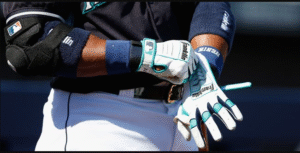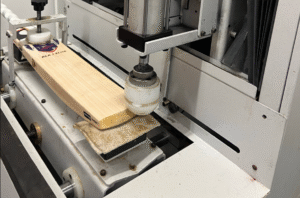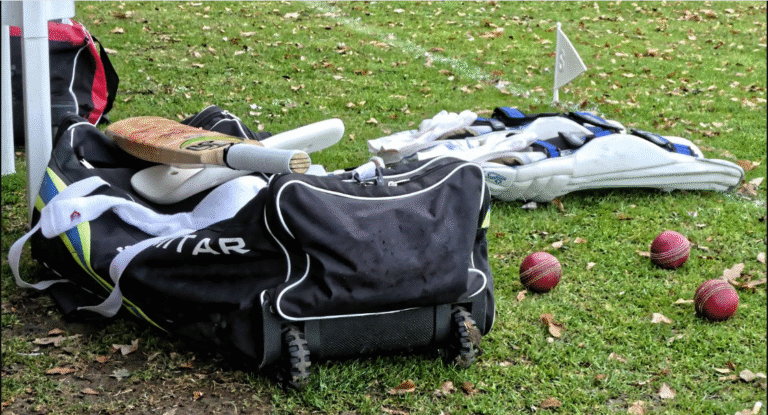A professional cricket kit is more than just a collection of gear—it’s a cricketer’s trusted companion on the field. Whether you’re a fast bowler, an all-rounder, or a wicketkeeper, your performance depends heavily on the quality and completeness of your cricket kit. This article breaks down every item that goes inside a professional cricket kit, making it easier for both beginners and advanced players to understand what they need and why.
1. Cricket Bat: The Heart of the Game
The cricket bat is the most important tool in a cricketer’s kit. Professional bats are made from English willow or Kashmir willow, with English willow being the preferred choice due to its lightweight and durability.
-
Size and weight: Professional players use bats suited to their height and style.
-
Grains: A bat with 6–12 straight grains is considered ideal.
-
Handle types: Comes in oval and round handles for different grip preferences.
Tip: Always knock-in your bat and apply protective oil before use.
2. Batting Pads: Shielding Your Legs
Batting pads protect your legs from high-speed deliveries. In a professional kit:
-
Made from lightweight materials like high-density foam.
-
Include knee rolls and ankle straps for extra support.
-
Padded with leather or PU for comfort.
Proper pads reduce the risk of injury and increase player confidence while batting.
3. Batting Gloves: Protect Your Hands

Gloves ensure grip and protect fingers from impact.
-
Palm materials: Leather palms offer strong grip and durability.
-
Padding: Foam and cotton paddings absorb shock from fast balls.
-
Ventilation: Mesh or air holes keep hands sweat-free.
Professionals often carry multiple pairs to switch during long innings.
4. Helmet: Essential for Head Safety
No cricket kit is complete without a helmet. Helmets protect players from bouncers and accidental hits.
-
Made with polycarbonate shells and steel grills.
-
Come with adjustable chin straps and internal cushioning.
-
Some modern helmets offer neck guards for extra safety.
Helmets are mandatory in most leagues and matches for batters and close fielders.
5. Abdominal Guard (Box): Hidden Yet Crucial
Also known as the “box,” this is a vital component for male players.
-
Worn inside special briefs.
-
Made of hard plastic or composite materials.
-
Protects groin area during batting or wicketkeeping.
Never skip this item—even a single blow can be very harmful.
6. Thigh Guard, Arm Guard & Chest Guard
These additional guards provide all-around protection for professional players.
-
Thigh guard: Covers the upper leg not protected by pads.
-
Arm guard: Shields your forearm from rising balls.
-
Chest guard: Protects the ribs, especially for players facing fast bowlers.
These are optional for some, but most professionals use them during tough matches.
7. Cricket Shoes: The Right Grip and Comfort
Cricket shoes vary based on player role:
-
Batting shoes: Lightweight, with good toe protection.
-
Bowling shoes: Extra ankle support and strong grip soles.
-
Fielding shoes: Multi-purpose, with good traction.
Professional shoes usually have spikes for grip on grassy pitches.
8. Wicketkeeping Gear (If Applicable)
If you’re a wicketkeeper, your kit needs extra items:
-
Wicketkeeping gloves: Larger, padded, and webbed for catching.
-
Inners: Worn inside gloves to absorb sweat.
-
Pads: Smaller and lighter than batting pads.
Professional wicketkeepers often carry spare gloves and inners.
9. Cricket Bag: Organizing Your Kit
A professional cricket bag keeps everything organized and safe.
-
Types: Duffle bags, wheelie bags, or backpack-style.
-
Compartments: Separate sections for bat, gloves, helmet, shoes, etc.
-
Material: Water-resistant fabric with strong zippers.
Invest in a sturdy, spacious bag for easy travel and long-term use.
10. Clothing: Comfortable and Match-Ready
Professional cricketers always carry proper clothing:
-
Jersey and trousers: Lightweight and breathable fabric.
-
Training clothes: T-shirts, shorts, or track pants for practice.
-
Sweatbands and caps: For sun and sweat management.
Some also carry thermal inners for winter or rain jackets.
11. Accessories That Complete the Kit
Small but essential items include:
-
Grip cone and extra grips for bat handles.
-
Toe guard and scuff sheets for bat protection.
-
First-aid kit: Band-aids, muscle spray, and pain relief cream.
-
Energy bars, water bottles, and sunscreen for match days.
12. Fitness Equipment (Optional)
Many pros add fitness tools to stay match-ready:
-
Resistance bands
-
Skipping rope
-
Foam roller
These help warm up, cool down, and prevent injuries.
13. How to Choose the Right Cricket Kit
Here’s what to consider when buying a cricket kit:
-
Skill level: Beginners need basic gear; professionals need high-quality materials.
-
Budget: A full professional kit can range from $300 to $1000+.
-
Brand: Trusted names include SG, SS, Kookaburra, Gray-Nicolls, and Adidas.
-
Fit and comfort: Always try gear before purchase or check sizing guides.
14. Online vs. Offline Buying: Pros and Cons
Online:
-
More variety and deals.
-
Detailed reviews and comparisons.
Offline:
-
Physical trial and feel.
-
Expert advice in real time.
For professionals, a combination of both is ideal.
15. Caring for Your Cricket Kit

Maintenance extends the life of your gear:
-
Dry pads and gloves after every use.
-
Clean bat and apply anti-scuff sheets.
-
Store equipment in a cool, dry place.
-
Use silica gel packets in your kit bag to avoid moisture damage.
Frequently Asked Questions
Q1. How much does a professional cricket kit cost?
A: It ranges between $300 and $1000, depending on brand and quality.
Q2. Can I buy individual items instead of a full kit?
A: Yes. Professionals often upgrade individual items based on need.
Q3. What’s the difference between a beginner and professional cricket kit?
A: Professional kits use premium materials, offer better protection, and include specialized gear like multiple gloves, guards, and accessories.
Q4. Are helmets mandatory in cricket?
A: Yes, in most formats and especially when facing fast bowlers.
Q5. How often should I replace my cricket gear?
A: Bats and gloves may need replacement every 1–2 years, depending on use. Pads and helmets can last longer with good care.
Conclusion: Gear Up for Peak Performance
A professional cricket kit is a well-thought-out collection designed to support performance, protection, and convenience. Every item—from the bat to the helmet to the smallest grip cone—plays a role in a player’s success. Whether you’re upgrading or just starting out in the professional circuit, knowing what’s inside a full cricket kit helps you prepare better, stay safe, and play at your best.
Invest in the right equipment today, and your future self on the field will thank you.

